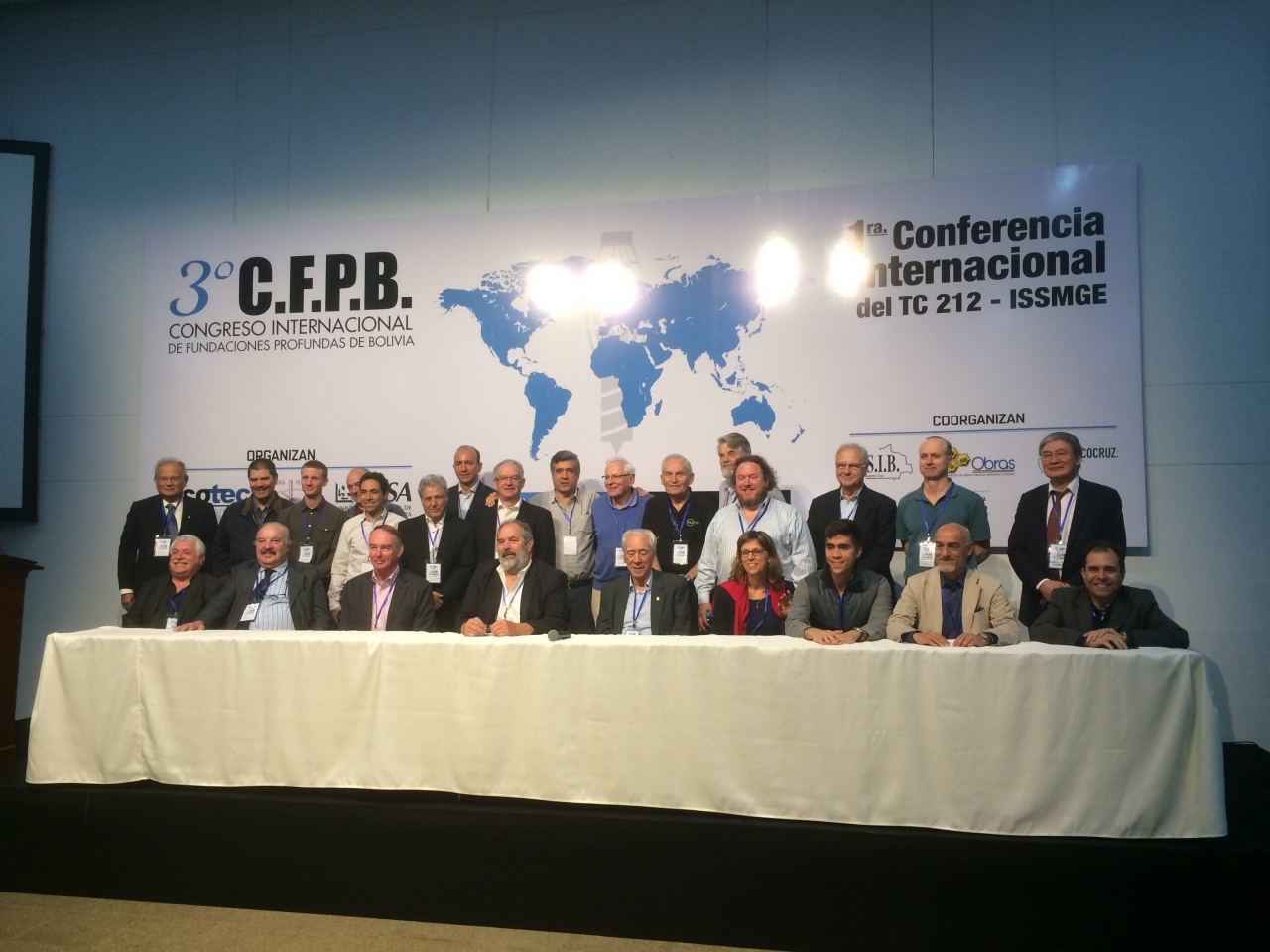The 3rd Bolivian International Conference on Deep Foundation and 1st TC212 International Conference has taken place from 27th to 29th April 2017 in Santa Cruz de La Sierra (Bolivia).
The Conference has been organized by INCOTEC SA Bolivia in association with the Society of Engineers of Bolivia, the Bolivian Society of Soil Mechanics and Geotechnical Engineering and the Chamber of Construction of Santa Cruz.
It has been held at the UPSA Campus (Universidad Privada de Santa Cruz) and arranged with the support of the International Society of Soil Mechanics and Geotechnical Engineering (ISSMGE), Technical Committee 212 “Deep Foundations”.
During the first two days of the conference, speakers of international repute and coming from several countries all over the world (Argentina, Bolivia, Brazil, Canada, France, Germany, Israel, Italy, Saudi Arabia, Sweden, USA) have been invited (Figure 1) to present papers on specific topics, covering different aspects of deep foundations.
Some TC 212 members attended the Conference, namely Alessandro Mandolini (Italy), Mario H. Terceros (Bolivia), Dan Brown (USA), Rodrigo Salgado (USA), Paulo J.R. Albuquerque (Brazil). Also the ISSMGE President Roger Frank joined the event.

All the invited lectures have been included in Volume 1 of the Conference Proceedings, edited by Bengt H. Fellenius, Rainer K. Massarsch, Alessandro Mandolini (TC212 Chiarman) and Mario H. Terceros (TC212 member), printed by Omnipress, Madison, WI (USA).
The third day of the conference was devoted to the presentation and discussion of several full scale tests which were carried out at the Bolivian Experimental Site for Testing Piles (B.E.S.T.), adopted by ISSMGE TC 212 as a reference site for investigations on piles and pile groups (Terms of Reference #1).
According to TC212 decision as adopted during the meeting held in Edinburgh during the XVI ECSMGE, an International Prediction Event was organized with the aim of checking our present capability to predict pile response for different loading conditions (bi-directional; head-down).
All the B.E.S.T. experiments, including very detailed geotechnical investigations, were carried out under the supervision of Bengt H. Fellenius (Coordinator), Rainer K. Massarsch, Alessandro Mandolini and Mario H. Terceros.
All the collected data, together with their interpretation, have been included in Volume 2 of the Conference Proceedings (same editors and publisher).
Four different pile types (bored, CFA, FDP) were selected for the prediction exercises, namely pile A3 (bored with bentonite slurry, d = 620 mm, L = 9.5 m; head-down load test), pile B2 (CFA, d = 450 mm; L = 9.5 m; head-down load test), C2 (FDP, d = 450 mm, L = 9.5 m; head-down load test) and E1 (FDP, d = 300 mm with Expander Body at the base d = 400 mm, L = 9.5 m; bi-directional load test).
A total of 71 separate predictions were submitted by 117 individuals from 30 different countries. Ten submissions were received from members of the TC212.
All the predicted load-movement curves are reported in the following figure together with the experimental one (in red). Any comment is left to the reader !!!!!

The predictions as well as a presentation of test results will be published in a Volume 3, now under preparation.
For any further information, please refer to www.cfpbolivia.com.
It is possible to download at no cost the proceedings of the Third International Conference on Deep Foundations and 1st ISSMGE - TC 212 International Conference at http://www.cfpbolivia.com/web/page.aspx?refid=162.
